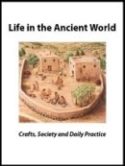In a first-of-its-kind discovery, archaeologists with the Israel Antiquities Authority (IAA) have uncovered a remarkable rural estate in the Negev Desert, dating to the eighth-ninth centuries C.E. (the Early Islamic period). Featuring elaborate living quarters and a large complex of underground vaults, the estate stands as a testament to its owners’ great wealth and continues to add to the previous discoveries in the area.

Luxury in the Desert
Despite making up over half of the modern state of Israel, the Negev Desert is sparsely populated. This was no less true in antiquity. Nevertheless, excavations in the Negev continue to shed light on various communities throughout the region’s history. One such community lived near the modern town of Rahat at the beginning of the Islamic period. In addition to one of the earliest known rural mosques, unearthed at the site in early 2022, the excavations also uncovered a fascinating estate.
The estate was constructed around a central courtyard and included four wings of rooms. While some rooms had marble floors and fresco-decorated walls, others contained large ovens and delicate glass serving dishes. The excavators also came across one truly unexpected discovery—a unique vaulted complex underneath the building.
According to the excavators of the site (Oren Shmueli, Elena Kogan-Zehavi, and Noé D. Michael), “This is a unique discovery, unknown until today. We were surprised to discover a complex of stone-built vaults at a depth of 5.5 m (18 ft) below the courtyard, standing to a height of 2.5 m (8 ft). The vaults were carefully constructed, and they probably led into additional underground complexes that have not yet been uncovered. Our biggest surprise was the discovery of an opening below the vaulted rooms that led into a deep rock-hewn cistern.” This subterranean complex likely served a dual purpose, both operating as a large storage space and providing respite for inhabitants against the extreme Negev Desert heat. The deep-cut cistern would have likewise kept the water of the estate at a cool drinking temperature.
The desert estate was inhabited at the same time as the nearby mosque, which is one of the earliest rural mosques ever discovered. The owners of the estate—apparently local grandees/nobility—were likely the same as those that paid for the construction of the mosque to serve themselves and the local farming community.
Only a hundred years earlier, the residents of this area had been Christians under the Byzantine Empire. “The evidence gathered so far from all of the excavation areas (dwellings, houses of prayer, ovens, and utensils) sheds light on the beginnings of the historical process that took place in the northern Negev with the introduction of a new religion (Islam) and a new rulership and culture in the region,” said the excavators.
The current archaeological project began as a salvage excavation, spurred on by the planned construction of a new neighborhood in the predominantly Bedouin town of Rahat. The mosque and other early Islamic finds are expected to be integrated into the new neighborhood, connecting the modern residents to their ancient past.
Read more in Bible History Daily:
From Christianity to Islam in the Negev
Ancient Dolphin Statue Unearthed in the Negev Desert
Tel Be’er Sheva, City of the Patriarchs
The post Luxury in the Negev Desert — 1200 Years Ago appeared first on Biblical Archaeology Society.




0 Commentaires